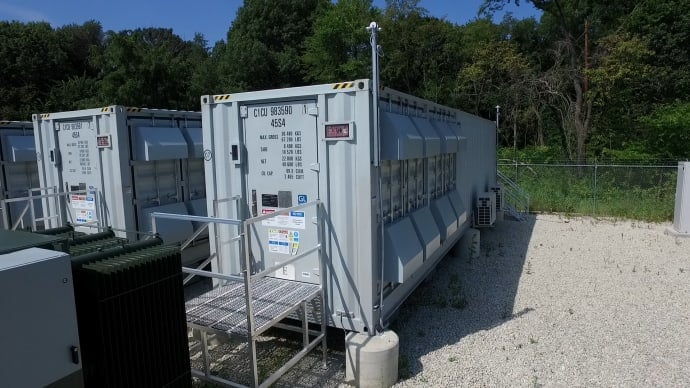
In a major energy strategy upheaval, the South Australian government is providing significant funding to support energy storage projects, starting with a 100MW grid-connected battery that will be the largest in the country.
The aim is to modernise the state’s grids and help support the increasing penetration of renewable energy capacity. Blackouts in the region caused a vicious nation-wide debate about what had caused the power cuts last year, with the matter still unsettled in some quarters.
Enjoy 12 months of exclusive analysis
- Regular insight and analysis of the industry’s biggest developments
- In-depth interviews with the industry’s leading figures
- Annual digital subscription to the PV Tech Power journal
- Discounts on Solar Media’s portfolio of events, in-person and virtual
Or continue reading this article for free
South Australia's new plan was announced just a few days after Tesla chief Elon Musk confirmed via Twitter that his company could solve South Australia’s grid crisis with a 100MW battery, which he would provide free of cost if not commissioned within a 100 days of being asked.
Following this, John Grimes, CEO of the Australian Energy Storage Council, said that the state government has been “at pains” to stress that there will be an open, competitive tender process to build the 100MW project.
For the overall storage push, the Renewable Technology Fund will provide AU$75 million in grants and AU$75 million in loans for a range of eligible storage projects, including solar thermal, biomass, hydrogen energy and pumped hydro.
The government also cited the ability of storage to help dispatch renewable energy as and when it is needed. It will therefore tender the remaining 25% of its electricity load to technologies that support dispatchable renewable technologies, with new contracts to commence on 1 January 2018.
Gas still prioritised
While the storage funding was welcomed by the industry, solar advocates criticised the revamped focus on gas as the government simultaneously announced plans for a 250MW gas-fired electricity generator, claiming that unclear policy setting had led to stagnation in thermal generation investment. It also said the gas plant could be switched on in times of emergency, therefore adding security to the system. This project will also be tendered soon.
In the interim period, the State government will work with South Australia’s transmission and distribution companies to provide up to 200MW of temporary generation. No more detail was given on how this temporary power would be sourced.
Claire O’Rourke, national director of campaign group Solar Citizens, said: “We have the technology without gas for a reliable, stable and affordable energy supply system, what we lack, as always, is the political will.”
Clean Energy Council chief executive Kane Thornton said: “The range of measures announced by Premier Jay Weatherill demonstrates that renewable energy and energy storage can contribute toward a more resilient and secure energy system.
“Energy storage is obviously going to be a huge part of Australia’s energy future, and the SA government’s funding for new large-scale battery technology will help accelerate its adoption and start to reduce its reliance on increasingly expensive gas power.”
He said the high-profile Twitter interaction between Elon Musk and Mike Cannon-Brooke, the founder of software firm Atlassian, about storage’s ability to solve the grid crisis had helped to capture attention across the world and had made known that the technology is progressing far faster than people had anticipated.
Energy Networks Australia CEO John Bradley, whose organisation has previously attacked the Renewable Energy Target (RET) and pushed for gas over renewables, welcomed the integrated approach to power system security, including both storage technologies and gas supply development, but said a wider national plan is still required.
He added: “This plan encourages new gas supplies which help to support system security, allows a competitive process for large-scale storage and enables gas-fired generation to support a stable and reliable grid.”
Rest of the plan
The state government will also introduce a new target requiring energy retailers to get more electricity from what it described as cleaner generators that produce their electricity using South Australia’s abundant natural resources, whether this be from gas, solar, wind, biomass or graphite, which is used for batteries.
The aim is also to create more self-sufficiency using local resources, while reducing dependence on coal from Victoria. Retailers will be compelled to source a percentage of energy from local generators rather than from Victorian coal through the state interconnector.
Applicants for new electricity-generation projects of more than 5MW capacity will also be required to demonstrate how they add to local energy-system security.
The state is also drafting new legislation “to ensure that South Australian energy users are not held hostage to unwarranted market behaviour”. It will give the Minister for Energy new powers to direct the national market in the case of an electricity supply shortfall.
In related news, energy storage has also received a big boost in Victoria after its state government announced another AU$20 million for large-scale energy storage, in addition to the AU$5 million already pledged.
